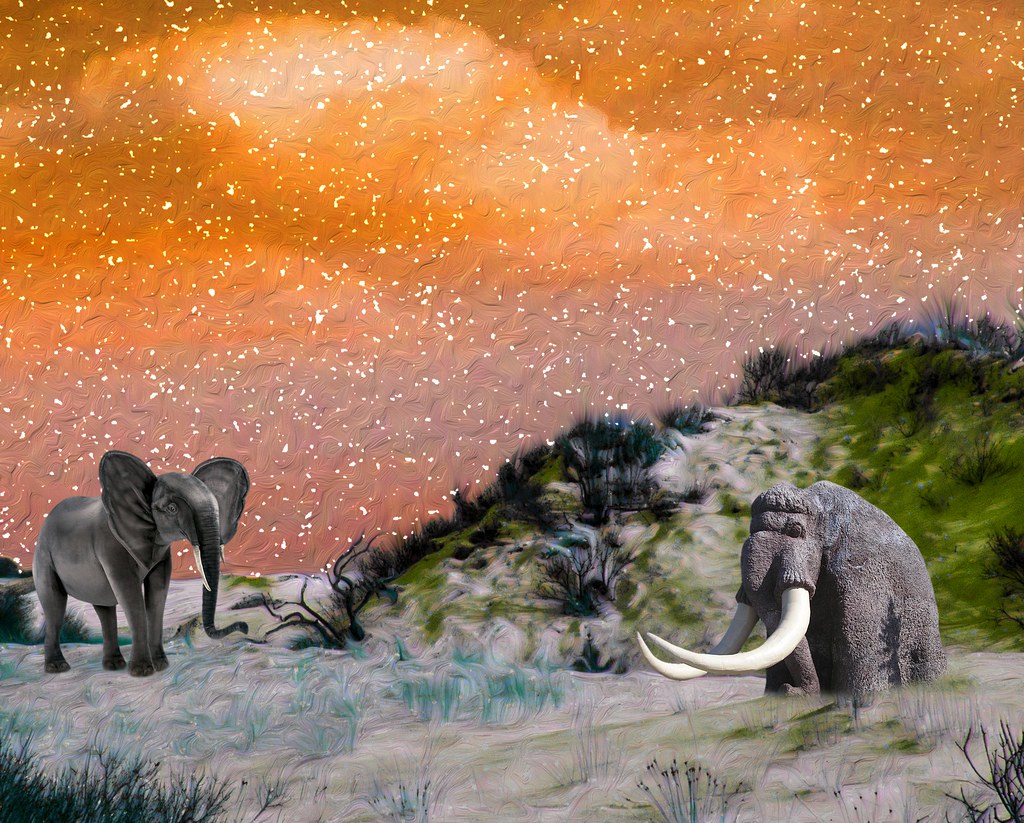Before making a mammoth, ask the public
By Victoria Herridge,
Nature
| 10. 20. 2021
Image by Russ Seidel on Flickr
Every few years for the past 20 or so, the story resurfaces, frozen in time like a permafrost carcass. At some future point, typically within the decade, scientists hope to ‘bring back the mammoth’. There have been a few tantalizing results — stirrings in mammoth nuclei transplanted into mouse eggs (K. Yamagata et al. Sci. Rep. 9, 4050; 2019) — but that’s it. Hence raised eyebrows at last month’s announcement by de-extinction champion and geneticist George Church, co-founder (with entrepreneur Ben Lamm) of biotechnology start-up Colossal: yet again, the world has about five years until a wobbly, woolly calf takes its first steps into the Anthropocene.
What Colossal actually aims to produce is less a mammoth than a new synthetic species, a chimaera of Asian elephant DNA and mitochondria, mammoth genetic code and, from the probable surrogate dam, African elephant epigenetics. The resulting cold-adapted elephants — Colossal hopes — will trample and graze northern Siberia to create something akin to the Ice Age grasslands of the woolly mammoth’s heyday. Compacted...
Related Articles
By Jonathan Matthews, GMWatch | 12.11.2025
In our first article in this series, we investigated the dark PR tactics that have accompanied Colossal Bioscience’s de-extinction disinformation campaign, in which transgenic cloned grey wolves have been showcased to the world as resurrected dire wolves – a...
By Jessica Hamzelou, MIT Technology Review | 11.07.2025
This week, we heard that Tom Brady had his dog cloned. The former quarterback revealed that his Junie is actually a clone of Lua, a pit bull mix that died in 2023.
Brady’s announcement follows those of celebrities like Paris...
By Lauran Neergaard, AP News | 11.03.2025
WASHINGTON (AP) — The first clinical trial is getting underway to see if transplanting pig kidneys into people might really save lives.
United Therapeutics, a producer of gene-edited pig kidneys, announced Monday that the study’s initial transplant was performed successfully...
By Meagan Parrish, PharmaVoice | 10.10.2025
When CEO Ben Lamm steps into the spotlight, it’s usually to talk about his efforts bringing extinct animals back to life. Once a far-flung idea, Lamm and the company he heads, Colossal Biosciences, have proven they can pull it off...




